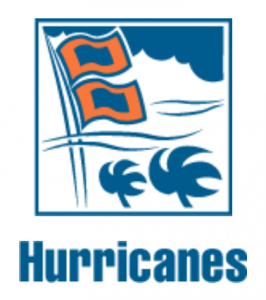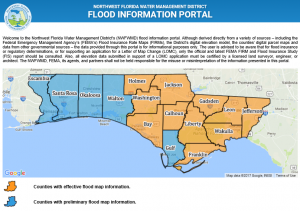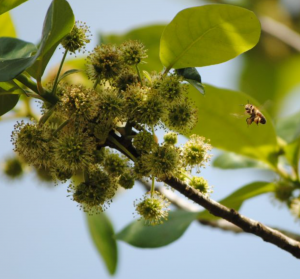by Ray Bodrey | May 21, 2017
Hurricane season begins this year on June 1st and ends November 30th. As Floridians, we face the possibility of hurricanes each year. This simply goes with the territory. During these months, it’s important to plan for the threat of a hurricane, and at the same time hope, it never happens.
First and foremost, you may be asked to leave your home in emergency conditions. Emergency management officials would not ask you to do so without a valid reason. Please do not second guess this request. Leave your home immediately. Requests of this magnitude will normally come through radio broadcasts and area TV stations.

Figure 1. UF/IFAS Disaster Handbook.
Credit. UF/IFAS Communications.
The most important thing to keep in mind is to have your own, up to date plan for a possible evacuation. The University of Florida has developed, “The Disaster Handbook” to help citizens plan for safety. The handbook includes a chapter dedicated to hurricane planning. The chapter can be downloaded in pdf at http://disaster.ifas.ufl.edu/chap7fr.htm.
Utilizing the 15 principles below will assist you in your evacuation planning efforts:
- Know the route & directions: keep a paper state map in your vehicle. Be prepared to use the routes designated by the emergency management officials.
- Local authorities will guide the public: Stay in communication with local your local emergency management officials. By following their instructions, you are far safer.
- Keep a full gas tank in your vehicle: During a hurricane threat, gas can become sparse. Be sure you fill your tank in advance of the storm.
- One vehicle per household: If evacuation is necessary, take one vehicle. Families that carpool will reduce congestion on evacuation routes.
- Powerlines: Do not go near powerlines, especially if broken or down.
- Clothing: Wear clothing that protects as much area as possible, but suitable for walking in the elements.
- Disaster Kit: Create a kit complete with a battery powered NOAA weather radio, extra batteries, food, water, clothing and first aid kit. The kit should have enough supplies for at least three days.
- Phone: Bring your cell phone & charger.
- Prepare your home before leaving: Lock all windows & doors. Turn off water. You may want to turn off your electricity. If you have a home freezer, you may wish not too. Leave your natural gas on, unless instructed to turn it off. You may need gas for heating or cooking and only a professional can turn it on once it has been turned off.
- Family Communications: Contact family and friends before leaving town, if possible. Have an out of town contact as well, to check in with regarding the storm and safety options.
- Emergency shelters: Know where the emergency shelters are located in your vicinity.
- Shelter in place: This measure is in place for the event that emergency management officials request that you remain in your home or office. Close and lock all window and exterior doors. Turn off all fans and the HVAC system. Close the fireplace damper. Open your disaster kit and make sure the NOAA weather radio is on. Go to an interior room without windows that is ground level. Keep listening to your radio or TV for updates.
- Predetermined meeting place: Have a spot designated for a family meeting before the imminent evacuation. This will help minimize anxiety and confusion and will save time.
- Children at school: Have a plan for picking up children from school and how they will be taken care of and by whom.
- Animals and pets: Have a plan for caring for animals and shelter options in the event of an evacuation. For livestock, contact your local county extension office.
Following these steps will help you stay safe and give you a piece of mind, during hurricane season. Contact your local county extension office for more information.
Supporting information for this article can be found in the UF/IFAS EDIS publication, “Hurricane Preparation: Evacuating Your Home”, by Elizabeth Bolton & Muthusami Kumaran: http://edis.ifas.ufl.edu/pdffiles/FY/FY74700.pdf
UF/IFAS Extension is An Equal Opportunity Institution.

by Ray Bodrey | Apr 26, 2017
Floods are a common concern in many areas of the U.S. Gulf coastal residents should be particularly aware. Floods may come in the form of flash floods, which come with little warning. Other flood conditions come on slower, as with large thunder storm fronts and tropical storms. With hurricane season not far away, it’s a good time to think about your property and the floodplains in your area.

Figure: Flood Information Portal.
Photo: Courtesy of the Northwest Florida Water Management District.
Floodplains are broadly defined as land susceptible to flooding by any source. Areas designated as flood hazard areas are known also as “base flood” or “100-year-flood” zones. However, this can be confusing to some. A 100-year-floodplain does not mean that once your property floods, you’ll most likely not see it flood again for 100 years. The calculation actually means that there is a 1% chance that flooding will occur in any year. Floodplains are calculated by statistical estimates based on historical storm data.
Most mortgage lending agencies and banks, as well as real estate and insurance companies are well informed sources regarding floodplain information. Floodplain maps are updated periodically and are available for the public online and in print. FEMA’s National Flood Insurance Program has recently revised the digital flood insurance rate maps for many counties in Florida.
The Northwest Florida Water Management District (NWFWMD) offers a great tool for us in the Panhandle. The NWFWMD has created a map website, known as the “Flood Information Portal”. This site is dedicated in showing the extent of areas of flood risks. The site is also helpful in determining flood insurance rates and building requirements. The site is very user friendly with a search function, where one can search for floodplain information for a specific address. A detailed report can also be generated showing both the effective and preliminary flood map for the particular address selected. The map website can be found at http://portal.nwfwmdfloodmaps.com. For more information please contact your local county extension office and county, or city, planning department.
Before a flood strikes, find out if buying flood insurance is right for you. If you are in an areas prone to flooding already, consider modifying your home to combat any future flooding issue. If you believe your property is at risk, please be prepared. Keep in mind that flooding in an area can lead to street closures, power outages and temporary reduction in public services.
Supporting information for this article can be found in, “The Disaster Handbook” at the UF/IFAS web address: http://disaster.ifas.ufl.edu/
UF/IFAS Extension is An Equal Opportunity Institution.
by Ray Bodrey | May 13, 2016
The Annual Tupelo Honey Festival will be held on Saturday, May 21st from 9 AM – 4 PM at Lake Alice Park in Wewahitchka. It’s an exciting event, and your chance to take part in this local delicacy. Area honey producers will be on hand, selling their honey in a variety of sizes. There will also be food, art & crafts, and live music.
For decades, tupelo honey has been synonymous with Gulf county. The pollen from the tupelo gum tree (Nyssa ogeche), produces some of the finest honey in the world. The common name “tupelo” is derived from language of the Muscogee Nation, also known as the Creek Indian Nation. The meaning of the word is “swamp tree”, as this tree flourishes in areas of wet soils and seasonal flooding. Gulf county, especially in the Dead Lakes and Apalachicola river region, provides prime habitat for one of the largest tupelo forests on earth.
The tupelo pollination process kicks off during April. The tupelo bloom begins to form as a small bud. Within a few weeks, the bud explodes into a cluster of many nail or spike like attachments. At this point, honeybees begin to descend and capture the pollen.

Figure 1. Honeybee visiting tupelo blossoms.
Credit. Gulf County Tourist Development Council.
The tupelo bloom season lasts from approximately mid-April to the end of May. This is an anxious time for beekeepers. Tupelo blooms are very temperamental and delicate in nature. For this short period, beekeepers hope for little wind or rain and no cold temperatures, as any of these factors can decimate tupelo honey production. Regardless of seasonal impacts, the demand for Gulf County’s tupelo honey never subsides.
A bonus to honey’s great taste, is the medicinal value. Honey has been used for medicinal purposes throughout time and cultures. Ancient Egyptians used honey in the embalming process, wound dressing and treatment for burns. Honey can be used as an antimicrobial agent. This is mostly due to low concentrations of hydrogen peroxide produced naturally from sugar compounds. Honey contains large amounts of sugars, approximately 97%. Most of the sugar content is glucose and fructose. Honey also contains smaller amounts of vitamins and minerals.
The color of honey is a factor when grading content. Generally, a darker honey will have a higher concentration of polyphenols. This means the honey is higher in antioxidants and anti-inflammatory properties. Exposure to area honey has been thought to help people who suffer from area specific seasonal allergies. However, there is no consensus among the scientific community to support the claim. Though there is research supporting honey as medicinal purposes, please consult with your physician before using as a medical treatment.
Enjoy tupelo honey and see you at the festival!
For more information on Gulf County Tupelo Honey, please visit:
http://www.tupelohoneyfestival.com/
https://www.visitgulf.com/tupelo-honey
Supporting information for this article can be found in the UF/IFAS EDIS publication “Health Benefits and Medicinal Value of Honey” by Sara Marshall, Liwei Gu and Keith R. Schneider: https://edis.ifas.ufl.edu/pdffiles/FS/FS26700.pdf
An Equal Opportunity Institution. UF/IFAS Extension, University of Florida, Institute of Food and Agricultural Sciences, Nick T. Place, Dean for UF/IFAS Extension. Single copies of UF/IFAS Extension publications (excluding 4-H and youth publications) are available free to Florida residents from county UF/IFAS Extension offices.




